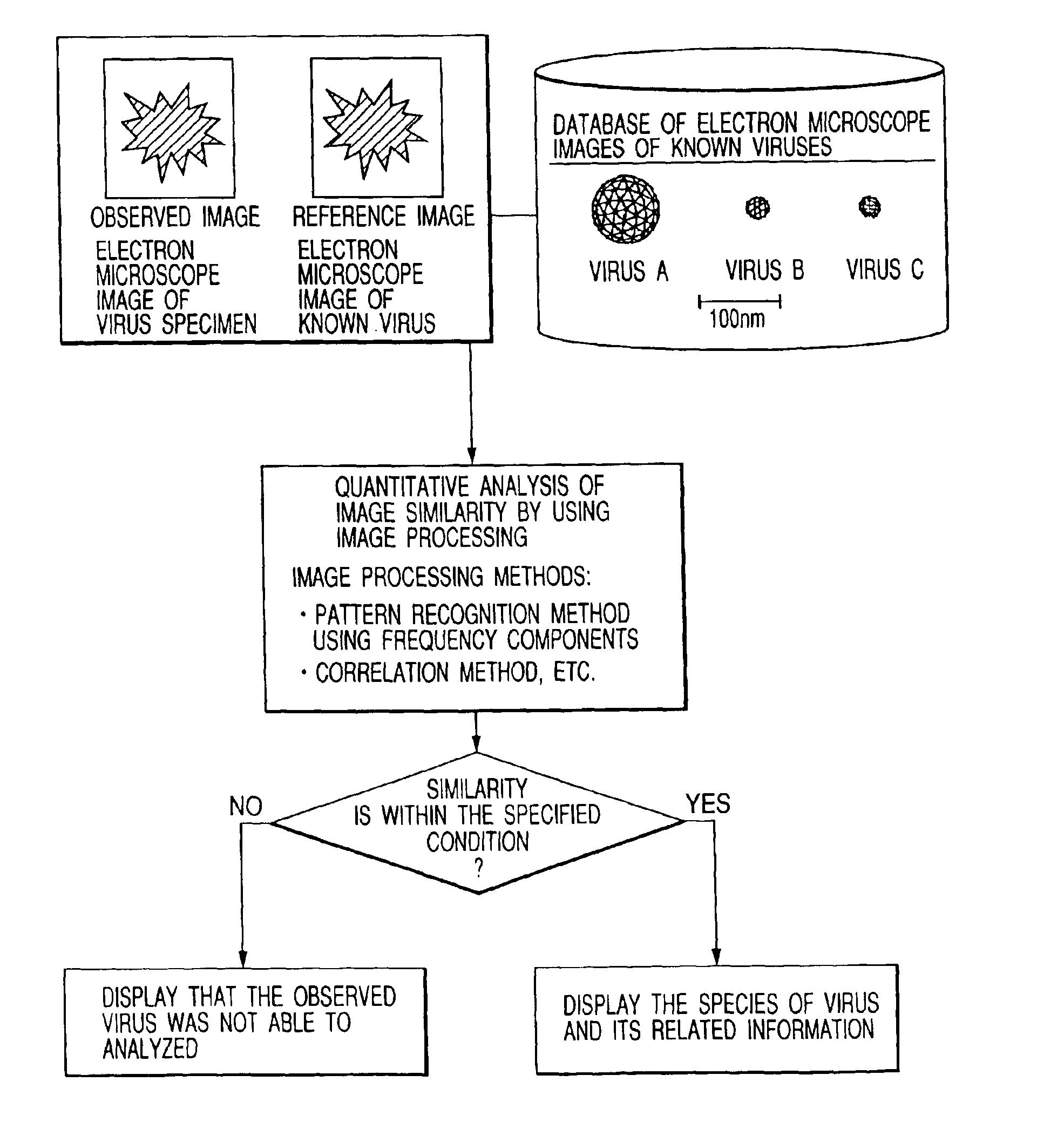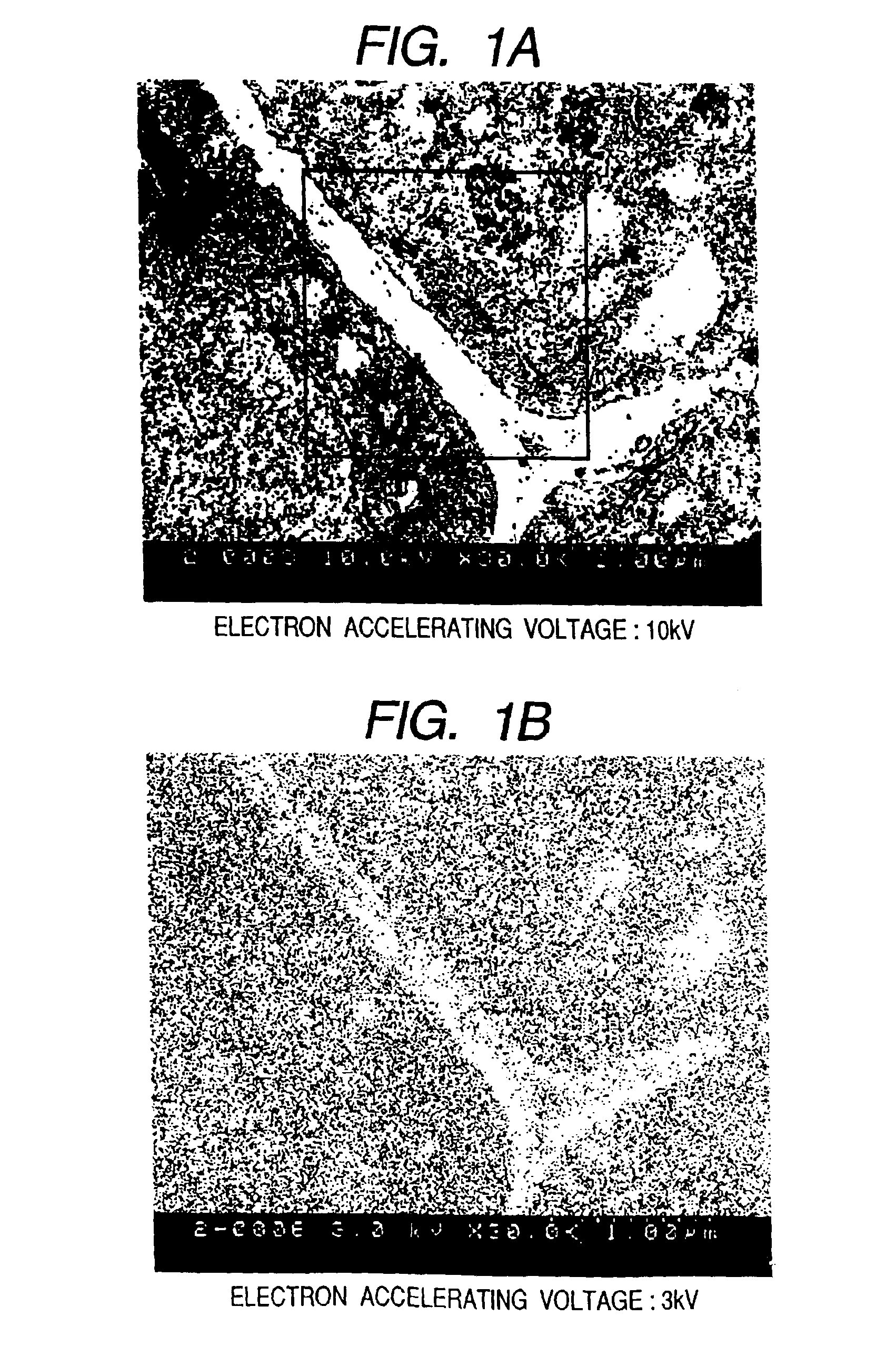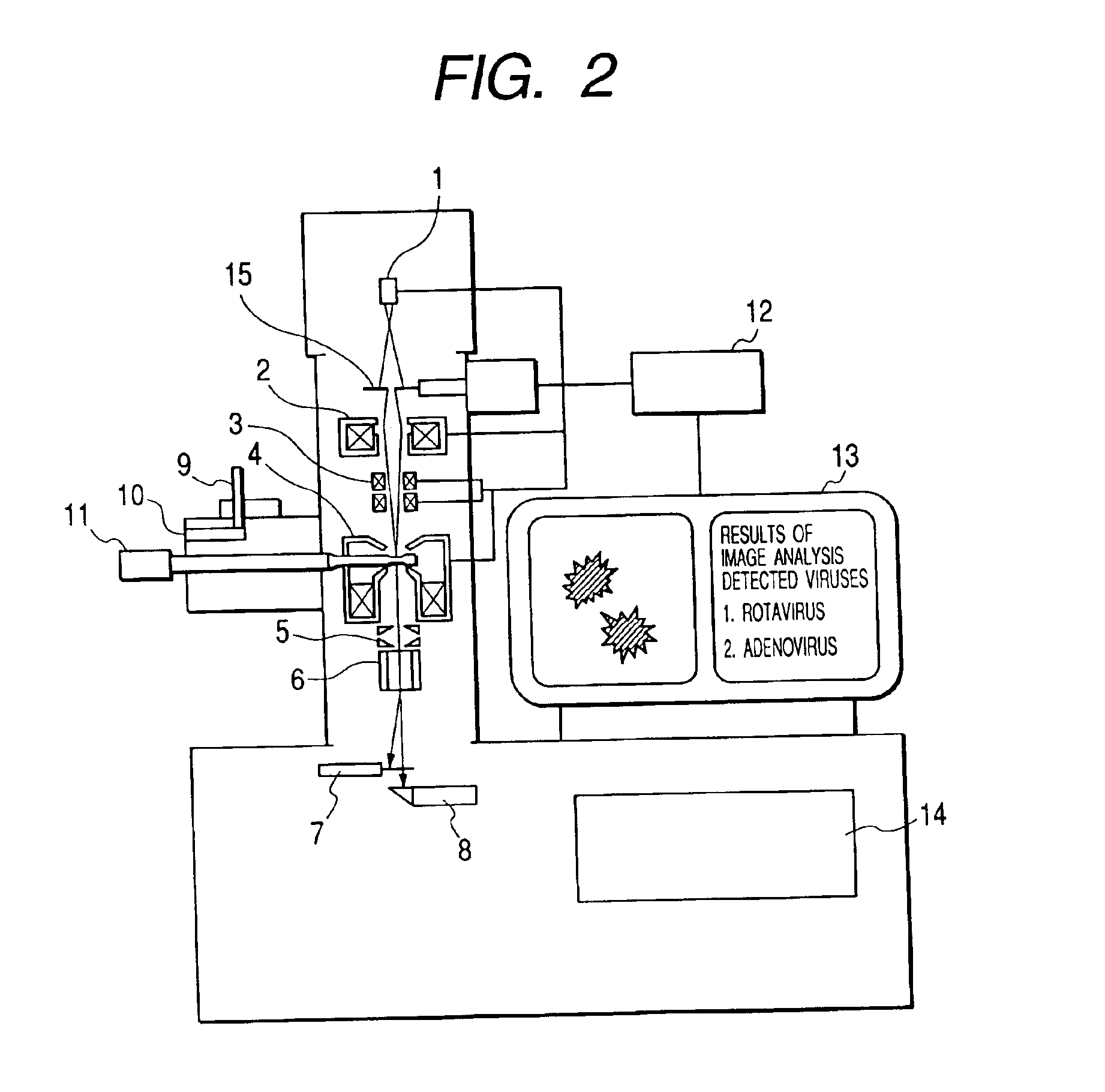Bio electron microscope and observation method of specimen
a technology of electron microscope and specimen, which is applied in the field of electron microscope, can solve the problems of insufficient specimen preparation function of electron microscope, difficult to provide image contrast, and inability to prepare specimens, etc., and achieves high contrast, low damage, and high-accuracy image analysis.
- Summary
- Abstract
- Description
- Claims
- Application Information
AI Technical Summary
Benefits of technology
Problems solved by technology
Method used
Image
Examples
Embodiment Construction
An embodiment of the present invention will be described below.
FIG. 1 shows scanning transmission electron microscope images (STEM images) observed using a bio electron microscope and an observation method according to the present invention. A specimen is a stained section specimen of Arabidopsis (plant) and has a specimen thickness of 100 nm. In FIG. 1(a), the specimen is observed by an incident electron beam having an optimum accelerating voltage of 10 kV, and in FIG. 1(b), the specimen is observed by an incident electron beam having a critical electron accelerating voltage possible to transmit a specimen of 3 kV (The definitions of the critical electron accelerating voltage possible to transmit a specimen and the optimum accelerating voltage are described later.). The former can obtain image qualities such as a resolution and contrast which are by no means inferior to the prior art bio transmission electron microscope (TEM) of a 100 kV accelerating voltage class. In other words, ...
PUM
 Login to View More
Login to View More Abstract
Description
Claims
Application Information
 Login to View More
Login to View More - R&D
- Intellectual Property
- Life Sciences
- Materials
- Tech Scout
- Unparalleled Data Quality
- Higher Quality Content
- 60% Fewer Hallucinations
Browse by: Latest US Patents, China's latest patents, Technical Efficacy Thesaurus, Application Domain, Technology Topic, Popular Technical Reports.
© 2025 PatSnap. All rights reserved.Legal|Privacy policy|Modern Slavery Act Transparency Statement|Sitemap|About US| Contact US: help@patsnap.com



